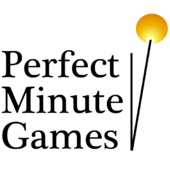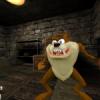Curling Physics
I''m a real curling fan, and now that the Olympics are here, I get to watch bonus Curling. Great stuff.
I was even considering a simulation or even a game involving Curling. I would think the equations would get hairy right quick.
As far as I can see you have:
You have the velocity of the rock out of the hack. This determines distance over the ice.
The rock has spin. When the rock slows it curls. Clockwise spin makes it curl right. Counterclockwise spin makes it curl left.
Spin also has an effect on other rocks in that it makes them spin in the opposite direction of the rock that is hit it.
I don''t know why the rocks curl on account of spin. But I do find it very interesting. Added to all this confusion is the sweepers who can make the rock go farther by melting the ice in front of it and decreasing the friction below it.
Any thoughts ?
Guy
I was thinking about a similar problem a while back, it involved working out how a spinning ball curls in the air. I came up with a reason which goes a little bit like this:
Since the ball (or puck thing) is moving forwards and rotating about its own axis, one side of the puck has a higher relative speed to the air (or ground) than the other.
If you then think about the action of the air against the surface you get more friction on the faster-relative-velocity side. This means more force on that side.
Since there''s more force on one side of the ball than the other, the ball would be accelerated sideways (assuming that the spin axis is vertical which it would be for your curling stones).
I think it would be possible to model this increased force as being proportional to the angular velocity, and then you can just treat it like any other force.
This model means that the ball would accelerate sideways more the faster it spins so you''d need to suss out what happens as it slows down (friction would decrease spin too, as I think you mentioned...)
Hope thats given you some food for thought anyway!
Regards, James Paulin
Since the ball (or puck thing) is moving forwards and rotating about its own axis, one side of the puck has a higher relative speed to the air (or ground) than the other.
If you then think about the action of the air against the surface you get more friction on the faster-relative-velocity side. This means more force on that side.
Since there''s more force on one side of the ball than the other, the ball would be accelerated sideways (assuming that the spin axis is vertical which it would be for your curling stones).
I think it would be possible to model this increased force as being proportional to the angular velocity, and then you can just treat it like any other force.
This model means that the ball would accelerate sideways more the faster it spins so you''d need to suss out what happens as it slows down (friction would decrease spin too, as I think you mentioned...)
Hope thats given you some food for thought anyway!
Regards, James Paulin
There is a subtle difference between a spinning ball in flight and a Curling rock (funny name... I thought it was called a stone, but then I don't know much about curling coming from Australia so I'm probably mistaken about the name!) sliding down the ice: the ball generates lift based on an air pressure differential on its surface, whereas the rock generates curl based on a dynamic friction differential on its underside. However, both are caused by the difference in velocity, relative to the air/ice, between different sides of the ball/rock.
I'm not going to go into the physics of it... most good introductory physics texts cover this problem.
Cheers,
Timkin
Edited by - Timkin on February 17, 2002 9:18:57 PM
I'm not going to go into the physics of it... most good introductory physics texts cover this problem.
Cheers,
Timkin
Edited by - Timkin on February 17, 2002 9:18:57 PM
Rock=Stone  A lot of Canadian announcers in particular will say a team with the hammer has Last Rock, but will say that the team has, for example, Five Stones Remaining.
A lot of Canadian announcers in particular will say a team with the hammer has Last Rock, but will say that the team has, for example, Five Stones Remaining.
I've been interested in the same problem for the same reason. I'll just cover it off for you, since not once in four years of university physics did I ever see a problem on curling in my texts (maybe I simply wasn't looking hard enough?).
In general, say you use a rightie in-turn curl:
......\/
.../\.O.\/
See how the outside edge is traveling FASTER than the inside edge? Within the domain of low-speed travel, resistance is generally lower at higher speeds (and is highest when the surfaces are at rest with respect to one another, although you'd never curl a rock that hard), thus the outside edge is experiencing less friction than the inside edge. [edit]Hence the stone tends to "pivot" on the higher-friction right side, curling to the right.[/edit]
On the other hand, sweeping the surface of the ice reduces the friction for both sides by making it easier to melt the ice. If more ice melts, a thicker "hydroplane" layer results, meaning that the rock experiences a much lower coefficient of friction and fluid dynamics begins to take over the curl. In this case, the curl is so slow that the rock experiences almost no differential between sides - much the same as a fastball with a slight sidereal spin doesn't really deviate from a straight line - and the curl is hence reduced.
Of course, the lower friction also means the rock travels farther.
There are a surprising number of technical resources online for curling fanatics - a good search on google should help you on your way.
ld
Edited for accuracy
Edited by - liquiddark on February 18, 2002 2:43:02 PM
I've been interested in the same problem for the same reason. I'll just cover it off for you, since not once in four years of university physics did I ever see a problem on curling in my texts (maybe I simply wasn't looking hard enough?).
In general, say you use a rightie in-turn curl:
......\/
.../\.O.\/
See how the outside edge is traveling FASTER than the inside edge? Within the domain of low-speed travel, resistance is generally lower at higher speeds (and is highest when the surfaces are at rest with respect to one another, although you'd never curl a rock that hard), thus the outside edge is experiencing less friction than the inside edge. [edit]Hence the stone tends to "pivot" on the higher-friction right side, curling to the right.[/edit]
On the other hand, sweeping the surface of the ice reduces the friction for both sides by making it easier to melt the ice. If more ice melts, a thicker "hydroplane" layer results, meaning that the rock experiences a much lower coefficient of friction and fluid dynamics begins to take over the curl. In this case, the curl is so slow that the rock experiences almost no differential between sides - much the same as a fastball with a slight sidereal spin doesn't really deviate from a straight line - and the curl is hence reduced.
Of course, the lower friction also means the rock travels farther.
There are a surprising number of technical resources online for curling fanatics - a good search on google should help you on your way.
ld
Edited for accuracy
Edited by - liquiddark on February 18, 2002 2:43:02 PM
No Excuses
Thanks for the replies,
I now have a better understanding of the physics involved.
I may have to put togeather some kind of physics engine
for such things. But it''s good to know it''s not an
uncommon problem.
Guy
The sweeper doesn''t "reduce the friction" of the ice. When it melts, it creates a very thin layer of water that the rock is able to glide over smoothly.
Beer - the love catalyst
good ol'' homepage
Beer - the love catalyst
good ol'' homepage
Beer - the love catalystgood ol' homepage
You said:
I said:
Now, my explanation goes into a little more depth, but I said what you said. Just so you know.
ld
quote:
Original post by Dredge-Master
...the ice. When it melts, it creates a very thin layer of water that the rock is able to glide over smoothly.
I said:
quote:
Original post by liquiddark
sweeping the surface of the ice reduces the friction for both sides by making it easier to melt the ice. If more ice melts, a thicker "hydroplane" layer results, meaning that the rock experiences a much lower coefficient of friction and fluid dynamics begins to take over the curl.
Now, my explanation goes into a little more depth, but I said what you said. Just so you know.
ld
No Excuses
Timkin, you should try to model a realistic cricket ball and the effect wind has on movement based on how scuffed/shiny each side is 
quote:
Original post by Knytestorme
Timkin, you should try to model a realistic cricket ball and the effect wind has on movement based on how scuffed/shiny each side is
Erm, thanks for the suggestion, but I wasn''t the one inquiring about ''how to'', rather I was offering a comment on the differences between spinning balls in flight and spinning rocks/stones on ice.
As for actually implementing a flying ball... no thanks! I did a full aerodynamics simulator for a robotic aircraft a little while back... that was enough to put me off computational aerodynamics for a long time!
Cheers,
Timkin
This topic is closed to new replies.
Advertisement
Popular Topics
Advertisement
Recommended Tutorials
Advertisement








